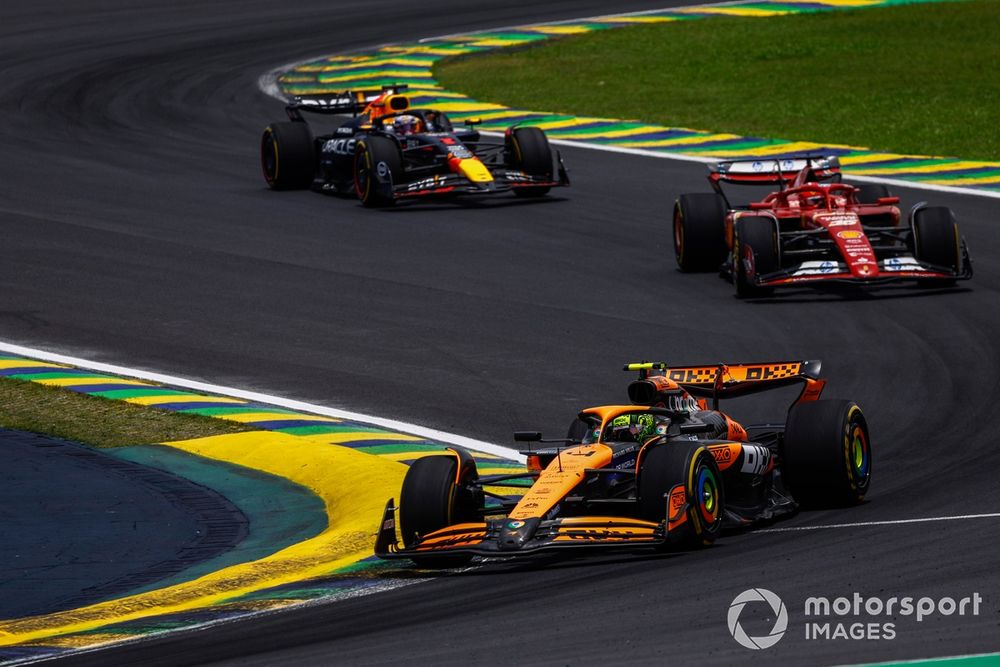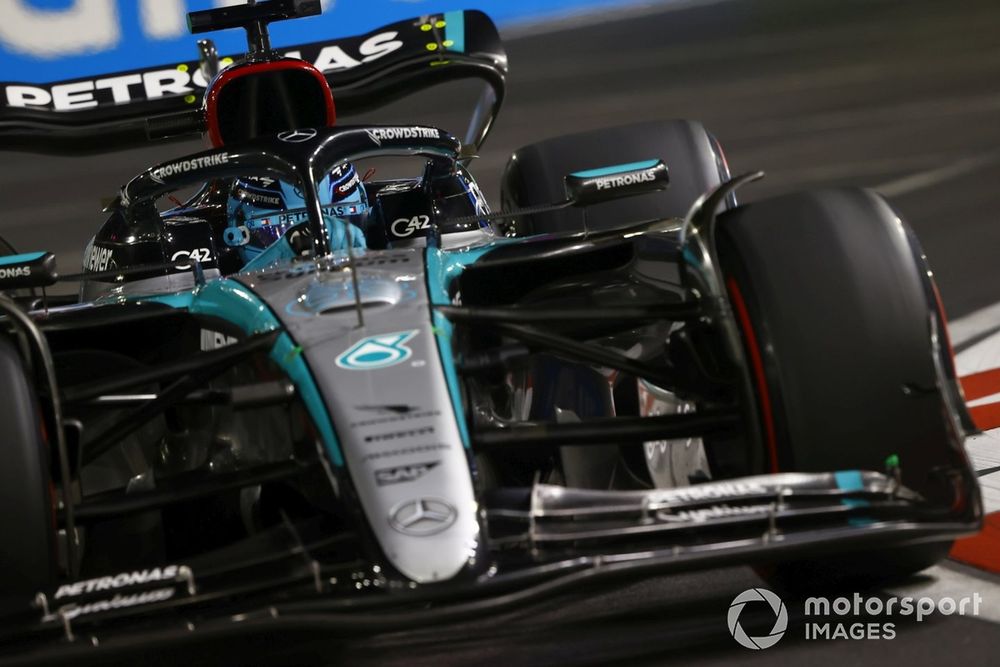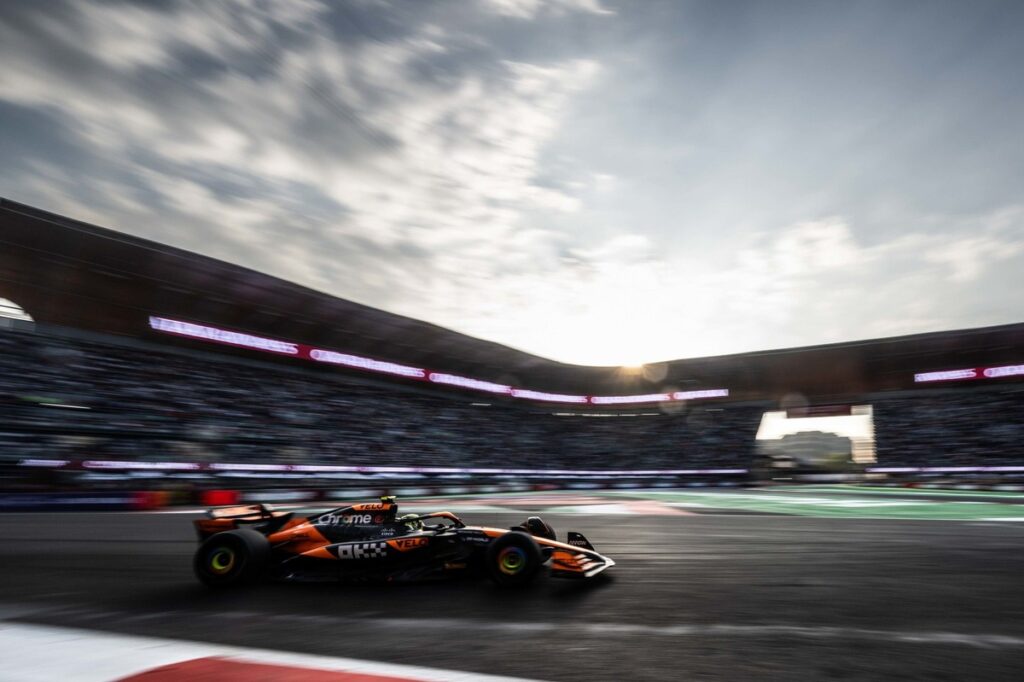Oscar Piastri’s Formula 1 world championship lead looks rather less unassailable after a borderline disastrous United States Grand Prix weekend. The McLaren driver now not only faces stern opposition from team-mate Lando Norris, but the unstoppable force of Max Verstappen with momentum.
Mexico City
Bumps, thin air, and one long straight define this circuit. Despite that straight, and the shorter one between Turns 3 and 4, teams wind on the downforce because Turns 7 through 11 require some threading of the needle and it’s very easy to get a wobble on through here and lose speed. To a great extent, the thinner air at altitude negates the effect of bigger wings, which is one of the reasons Red Bull has thrived here over the past few years.
The RB21 is also one of the few cars to enjoy good, stable downforce at the higher ride heights required to protect the planks from this track’s bumps. There are also none of the really fast corners where McLaren’s MCL39 shines.
Ferrari performed well here last season, but the SF-25 hasn’t always enjoyed bumpy tracks since the Scuderia chased lower ride heights during its conception. The drivers are also managing another issue, one which they have been cagey about discussing, and that chiefly manifests itself at faster circuits.
This is another track where Pirelli is introducing a step in tyre compounds, so the C1 replaces the C2 as the hard, while the C3 and C4 remain the medium and soft. While the aim is to nudge teams towards two-stop strategies, the improved thermal degradation characteristics of this year’s tyres militates against the success of this tactic.
Max Verstappen, Red Bull Racing RB20
Photo by: Andy Hone / Motorsport Images
What happened in Austin was that the hard tyre was simply too slow, and teams defaulted – for the most part – to a one-stop medium-soft. Last season in Mexico, the entire top 10 did medium-hard and pitted within six laps of each other. If the hard is 1.5s a lap slower again, as it was last weekend, expect this to be a medium-soft festival of tyre management.
Races in Mexico City often come down not to who is fastest but who can keep their head. Verstappen would have done better last year had he not succumbed to a temper tantrum.
Brazil
Interlagos offers a tantalising mix of challenges, with fast first and last sectors bookending a twistier middle one. This need to set up the cars with a compromise between the conflicting requirements is roughly analogous to Spa, though teams can get away with slightly higher downforce settings given that Interlagos is at altitude.
Last year’s wet conditions offered Pirelli a get-out-of-jail-free card on race day because F1’s tyre supplier had brought compounds a step softer, but the C5 was so soft as to be unraceable. This year, it will be C2-C3-C4 as it was two seasons ago.

Lando Norris, McLaren MCL38, leads Charles Leclerc, Ferrari SF-24, and Max Verstappen, Red Bull Racing RB20
Photo by: Sam Bloxham / Motorsport Images
McLaren would normally expect to have the upper hand here in a dry race, given the MCL39’s aero efficiency at higher-downforce tracks. The slowing downhill section from the exits of the Senna ‘S’ to the potential overtaking zone at Descida do Lago is almost tailor-made for its car, as is the final sector from Juncao onwards. But, again, as McLaren team principal Andrea Stella has acknowledged, Red Bull’s weakness at higher-downforce tracks is no longer a given
Of the other front-midfielders, on paper Mercedes should have the upper hand on Ferrari given the SF-25’s allergies to bumps.
Las Vegas
While the desert-bound Disneyland for adults has little obviously in common with F1’s temple of speed, the abundance of straights make Las Vegas a low-downforce track, though the requirements are not so low as Monza. Colder climes also play a role, though the race is two hours earlier this year, so it will not be quite so chilly.
This track didn’t suit McLaren last year and there is no reason to suppose there will be a drastic improvement this time around. The MCL39’s advantage has been at its most marginal at low-downforce tracks and its other strong suit, thermal management of the tyres is unlikely to come into play, even though the ambients will be less frigid.
Last year’s race was more of a contest between Mercedes – whose cars have been faster in colder climes for the past few years – and Ferrari, which was on an upward performance trajectory. It’s become difficult to predict where Mercedes will be – half the time that seems to be a mystery to the team itself – but the smooth track surface and proliferation of straights will play to Ferrari’s strengths.

George Russell, Mercedes F1 W15
Photo by: Andy Hone / Motorsport Images
Verstappen was also a bit-part player in last year’s race, but the RB21 has been potent at lower-downforce tracks – more so later in the season after aero development. Its new-found ability to reach lower ride heights make Verstappen a potential favourite here.
Qatar
The Losail circuit was originally designed for motorcycle racing so it’s a fast, flowing layout with a moderately high downforce requirement and very few hard stops. Heat is also a factor at this location, despite it being a night race. Theoretically, that makes it a McLaren circuit, but the papaya posse underperformed in the grand prix last year after finishing one-two in the sprint.
Much of that was caused by Norris and Piastri underperforming in qualifying, and Norris receiving a somewhat contentious penalty for not slowing for yellow flags.
This is also a track where Ferrari can enter the mix. It’s not especially bumpy, and although the SF-25 has been problematic in high-speed corners, this has chiefly been ones that require fast changes of direction, where the rear end can come unstuck. Here, apart from a right-left-right between Turns 7 and 10, the corners have a linear radius.
Abu Dhabi
Aside from a fiddly section around the hotel and marina, this track is chiefly dominated by straights with a handful of fast corners, so aero efficiency with downforce wound on confers a strong advantage. Up until recently, that would have made it a nailed-on McLaren circuit but, given recent developments, it’s likely Verstappen will be closer. Last year, he was three-tenths off pole position in the car that had taken him to the drivers’ championship a week earlier.
Yas Marina is another venue likely to bring Ferrari into the mix, perhaps not for overall victory but as a potentially disruptive force behind the battle for pole position. As we learned in Austin, track position is now difficult to overturn even on circuits where overtaking is possible. Yas Marina, despite the best efforts of the owners, is as conducive to passing as Monaco.
We want to hear from you!
Let us know what you would like to see from us in the future.
Take our survey
– The Autosport.com Team
Read the full article here

